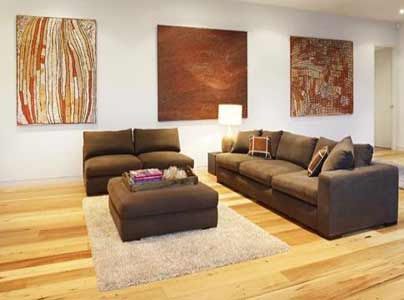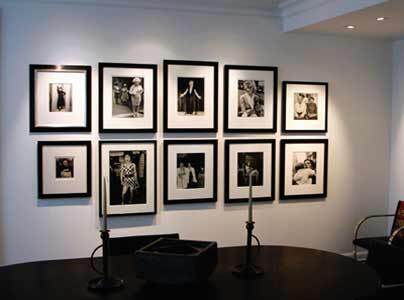Lessons in art
How many times have you been told that when buying art, you should follow your heart? That if you feel passionate about a piece, you’ll find a way to make it work? This is good advice, but it doesn’t go far enough.
You may love something on a bare wall in a well-lighted shop or a gallery, or even online, but how can you be sure you’ll love it as much once you get it home? And how do you decorate around it if you’re not sure what you’re doing? We asked some design experts for advice.
Don’t be afraid to go big - A single large piece - say, 1.2 x 1.5m - is more dramatic than several smaller ones. Have a great piece so that as you walk into the room, it sets the tone. A big giclée print, which uses a digital process to re-create a painting or photograph with paint pigment rather than ink, is a way to do this without going into debt. Giclées generally go for a small fraction of the cost of the original and are available from many emerging artists. And unlike a poster, a giclée print on canvas or ragstock looks almost like the real thing.
Add sculptural elements - Neglecting the three-dimensional will make a room feel flat. Sculpture can be anything from a piece you buy in a gallery to an antique urn filled with bamboo stalks. Think outside the box about placing sculpture around a room. Create interest by bringing the eye up to the top of an armoire or a mantel or a bookcase. Don’t be afraid to lean art in a layered montage with a variety of sculptural pieces, such as lamps, vessels, or objects from nature.
Definitely mix styles and materials - Combining not only modern and traditional art but also different media - photography, oil painting, watercolour - makes a room dynamic and interesting. One key to making it succeed is to choose pieces with a similar, but not identical, range of colours and tones.
Maintain balance - A single modern painting hung in an otherwise traditionally furnished living room can look off kilter. Establish a more equal representation of both styles, whether that means adding pieces of avant-garde art, some chairs with contemporary lines, or accessories - with a modern edge.
Choose black-and-white photography - It works in any environment, from austere contemporary to classic romantic. Stick with subjects that aren’t likely to become dated; nature and architectural scenes are good bets. Hanging black-and-white photos on coloured walls gives both the walls and the photos an extra pop.
Create a group from small pieces - Scattering small pieces around a room can diffuse their impact. Instead, create the feeling of a larger installation by hanging them together.
Keep frames and mats simple - Get rid of ornate, gilt frames, even around traditional pieces. A clean-lined frame and a neutral-toned mat give a fresh edge to classic art and are unlikely to detract from the piece. If you’re trying to mix different styles within the same palette, take the pieces to a good framer for advice on getting the pieces to play well together.
Opt for neutral furniture - Blending a bold sofa with eye-popping art requires a practiced eye. Choosing furnishings with clean lines, muted colours, and subtle patterns creates less room for decorating errors while keeping the focus on the art and giving you more flexibility to swap out pieces.
Edit what you own - Stay fresh; get rid of things that are old and dated. Rotate your art every year or so. Your eye stops noticing the over-familiar
Hang art at an appropriate height - Too many people hang art so high, it appears to be floating away. In general, the centre of a piece of art - or of an arrangement - should be 1.5m from the floor. If pieces are small and finely detailed, make sure viewers can get close enough to appreciate them.
chicago home magazine


